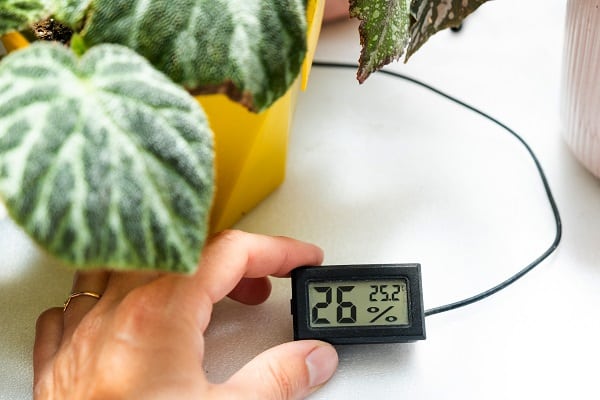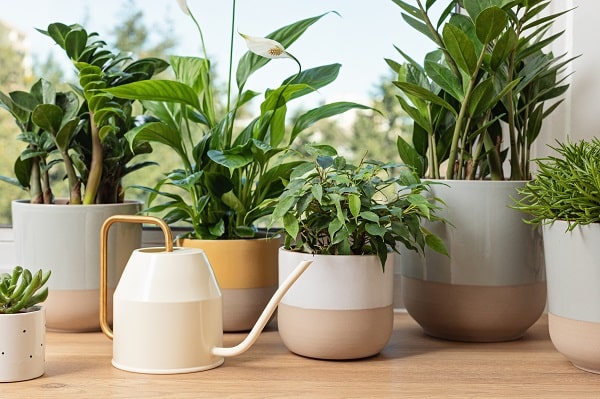Do you want to improve the air quality in your home but don’t know where to start? Adding some indoor plants is a great way to get started! Not only will they help purify the air, but they will also add some beauty and life to your space. This article will discuss the benefits of adding indoor plants to your home and provide tips for choosing the right plants.
The Benefits of Indoor Plants
Anyone who has ever had the pleasure of caring for a houseplant knows there is something special about the experience. Indoor plants offer many benefits that can improve your physical and mental health. For example, studies have shown that plants can help purify the air, reduce stress levels, and boost mood. They can also help you to focus and increase your productivity. In addition, indoor plants add both beauty and life to your home. Whether you choose a flowering plant for your windowsill or a succulent for your coffee table, adding a bit of greenery to your space will brighten your day. So next time you want to improve your health and well-being, consider reaching for a pot of soil instead of a pill bottle. You might be surprised at the difference that a simple houseplant can make.
Consider Lighting

When selecting houseplants, it is crucial to consider the lighting conditions in your home. Some plants, such as ferns and snake plants, prefer low-light conditions, while others like bright light, such as succulents and cacti. If you are unsure what lighting conditions you have in your home, consider taking a light meter reading; this will give you an accurate measurement of the light levels in your space. Once you know what kind of light you have available, you can select plants that will thrive in those conditions. For example, succulents and cacti would make good choices if you have a bright sunny windowsill. Conversely, ferns or snake plants would be better options if you have a dark corner in your home. By choosing the right plants for your lighting conditions, you can ensure that your houseplants will thrive for years to come.
Consider Temperature

When selecting plants for your home, it is important to consider the temperature of the space where you will place them. Some plants thrive in warm environments, while others prefer cooler temperatures. If you are unsure about the ideal temperature for a particular plant, ask a qualified nursery worker or consult a plant care guide. Once you have a general idea of the temperature range that your chosen plants prefer, you can narrow down your options by considering other factors, such as light and water requirements. With a little research, you can find the perfect plants to brighten up your home and create an inviting environment for family and friends.
Consider Humidity

Like most people, you probably don’t think much about humidity when picking plants for your home. But the truth is humidity can significantly affect how well your plants thrive. Not all plants are created equal when it comes to tolerating different humidity levels, so it’s important to research before making any purchases. If you live in an area with high humidity, plenty of plants will do well in that kind of environment. Some of the best choices include ferns, palms, and philodendrons. These plants thrive in moist conditions and can help to boost the humidity in your home. Just keep an eye on them and ensure they’re not getting too much water, as that can lead to problems like root rot. On the other hand, if you live in an area with low humidity, you still have plenty of options. Cacti and succulents are two of the best choices for dry conditions. These plants are adapted to living in arid environments and can help to reduce the humidity in your home. Just be sure to give them plenty of light and don’t overwater them, as that can cause them to rot.
Consider Available Space

When choosing the right plants for your home, another one of the most important factors to consider is the available space. Not all plants are well suited for small, cramped rooms, and cramming too many plants into a small area can result in an unhealthy environment for the plants and the people living in the space. If you have a small home or apartment, it’s best to choose low-maintenance plants that don’t require a lot of water or care. Some good options include succulents and air plants. These plants are easy to care for and thrive in even the most dribble homes. If you have a larger home with more open space, you have more options for choosing indoor plants. You can go for something more dramatic, like a palm tree or ficus, or stick with something more modest, like a peace lily or snake plant. No matter what plant you choose, be sure to research how much space it will need and how much care it will require. Then, with a little planning, you can have a healthy and beautiful home filled with plants that are just right for you and your space.
Watering Your Indoor Plants Correctly

Anyone who owns a houseplant knows they can be fickle creatures. It can be challenging to figure out how much water they need and even more difficult to get the watering schedule just right. Overwatering is just as harmful as underwatering, and it can be hard to know when to water your plants. However, a few simple tips can help you keep your plants healthy and hydrated. First, make sure that you are using a pot with drainage holes. This will allow excess water to escape, preventing your plant from sitting in soggy soil. Second, check the soil before watering. If the top inch of soil is dry, it’s time to water your plant. Finally, don’t be afraid to let your plant go slightly drought-stressed. This may sound counterintuitive, but allowing the soil to dry out completely between watering will encourage stronger roots. By following these simple tips, you can ensure that your indoor plants stay healthy and thrive.
Will You Reap The Rewards of Indoor Plants?
Choosing the right indoor plants for your home can be a bit of a balancing act. It would help if you considered lighting, temperature, available space, and proper watering techniques. But with some planning and research, you can create a beautiful and healthy indoor oasis filled with plants that are just right for you and your home. And don’t forget about the added benefits of indoor plants—not only do they add beauty and a touch of nature to your living space, but they can also improve air quality and reduce stress. So go ahead and start choosing the perfect plants for you. Your home, and your health, will thank you.


